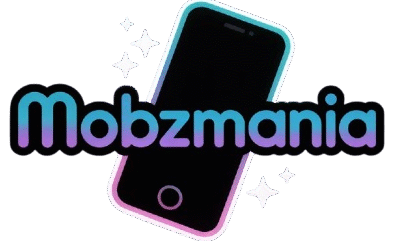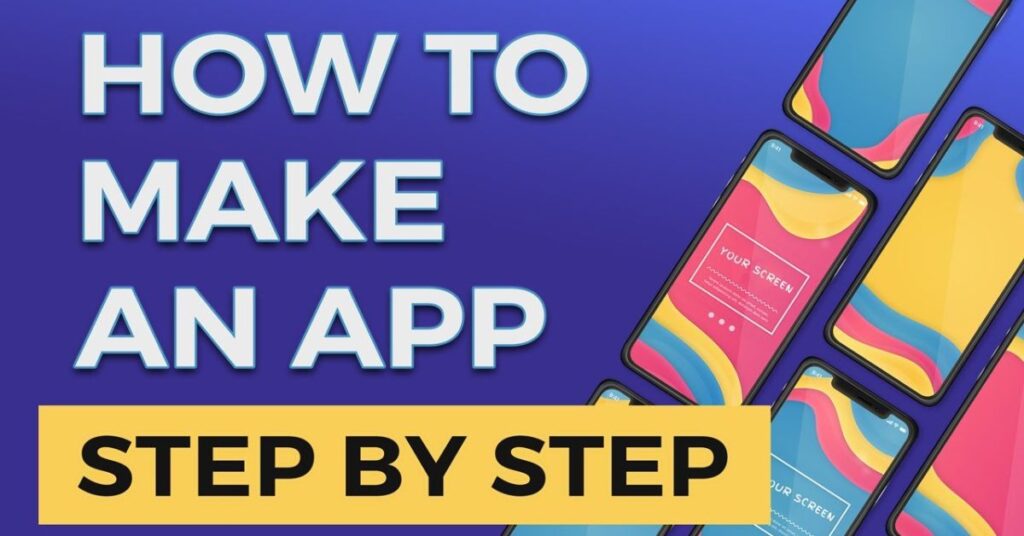Technology is moving faster than ever, and 2025 has opened a new era for app creators. Whether you’re an entrepreneur with a fresh idea or a business owner expanding into digital solutions, understanding how to make an app is now a must-have skill. This guide walks you through the entire process — from defining goals to launching, monetizing, and scaling your mobile application successfully. Creating an app is no longer about just coding; it’s about strategy, design, testing, and post-launch growth. Let’s explore how you can turn your app idea into reality using the latest tools, insights, and proven methods that dominate the U.S. app market today.
Turn Your App Idea Into Reality: Defining Clear Goals
Every great app begins with a powerful idea, but success comes from having clear and measurable goals. Before writing a single line of code, you must know what problem your app will solve and who will use it. Defining your goals means identifying your target audience, understanding their pain points, and determining how your solution stands out in a crowded digital marketplace. For instance, if you’re developing a fitness app, your focus could be on personalized workouts or real-time health tracking.
In 2025, clarity is more valuable than speed. Many U.S. startups fail because they rush into development without setting objectives that match user expectations. A goal-setting framework like SMART (Specific, Measurable, Achievable, Relevant, Time-bound) can help you stay aligned. Successful apps such as Calm or Duolingo didn’t just offer new features — they offered solutions that perfectly matched user behavior and long-term goals. When you define your mission precisely, you create a foundation strong enough to withstand market shifts and competition.
Market Research in 2025: Understanding What Users Really Want
Building an app without market research is like sailing without a compass. In 2025, understanding what users want goes beyond demographics — it’s about psychology, digital habits, and lifestyle choices. American app users are smarter and more selective, expecting personalization, privacy, and seamless user experiences.
Modern research tools such as Google Trends, App Annie, and Sensor Tower allow you to analyze competitors, identify trending niches, and track engagement metrics. You can also use AI-based sentiment analysis to evaluate how users feel about similar apps. This deep data helps you identify gaps that your app can fill.
A simple comparison shows how research impacts success:
| App Strategy | Without Market Research | With Market Research |
| User Understanding | Based on guesswork | Data-driven insights |
| Feature Selection | Random and unfocused | Based on user needs |
| Launch Performance | Low engagement | High retention rates |
When you understand what motivates your users, you can craft an app experience that feels personal and valuable. That’s the secret behind long-term success in the competitive U.S. app ecosystem.
Designing the Blueprint: How to Build a Winning Wireframe
Every app begins with a wireframe, the blueprint that maps out how users will navigate through screens. Think of it as the architectural plan of your digital product. A great wireframe focuses on clarity, simplicity, and functionality. Designers use tools like Figma, Sketch, and Adobe XD to visualize user flows before a single line of code is written.
The design phase isn’t about colors and icons — it’s about logic and user comfort. For example, a U.S.-based e-commerce app can fail if its checkout process is confusing. A well-planned wireframe eliminates friction points and ensures a smooth journey from sign-up to purchase. According to UX studies, apps with intuitive designs see up to 200% more user retention.
Creating wireframes helps you test usability early, saving time and money during development. The more detailed your blueprint, the fewer errors you’ll face later. Remember, great design doesn’t just attract users — it keeps them engaged.
Choosing the Right App Development Path in 2025
In 2025, there’s no one-size-fits-all development strategy. Choosing the right app development path depends on your budget, timeline, and target audience. The main choices include native apps, cross-platform apps, and progressive web apps (PWAs).
Native apps are built specifically for iOS or Android and offer the best performance. However, they require separate development teams and higher costs. Cross-platform apps (built using frameworks like Flutter or React Native) are more affordable and time-efficient, allowing one codebase for multiple platforms. PWAs, on the other hand, combine the benefits of web and mobile apps, offering instant access through browsers.
A quick comparison of app development options:
| Type | Best For | Pros | Cons |
| Native | High-performance apps | Fast, stable, great UX | Expensive and time-consuming |
| Cross-Platform | Startups & small businesses | Cost-efficient, faster to build | Slightly slower performance |
| PWA | Businesses with web traffic | No download required, easy updates | Limited access to device features |
Choosing wisely ensures your app aligns with user needs and future scalability. Many successful U.S. startups now prefer hybrid approaches, combining native and web elements for balance.
From Prototype to Launch: Building a Minimum Viable Product (MVP) That Works
Once your wireframe is finalized, it’s time to build a Minimum Viable Product (MVP) — a simplified version of your app that showcases its main features. The MVP helps you test your idea with real users before committing to full-scale development. It’s not about perfection; it’s about validation.
For example, when Instagram launched its MVP, it only offered basic photo sharing and filters. Yet, it was enough to prove the concept and attract millions. In 2025, American developers use agile methods to create MVPs within weeks, gather feedback, and improve through user data. Building an MVP also helps secure investors since it demonstrates real-world traction and proof of concept.
Developing an MVP first reduces financial risk and accelerates time to market. It’s the smartest way to test assumptions and build something users actually want.
App Testing Made Simple: Quality Assurance Tips That Save Time
Testing is one of the most crucial stages of app development, ensuring your app works smoothly across devices. In 2025, testing is not optional — it’s essential for survival. The U.S. app market is unforgiving; users uninstall apps that crash or lag even once.
Quality assurance involves multiple stages: unit testing, integration testing, performance testing, and user acceptance testing (UAT). Tools like TestFlight, Firebase Test Lab, and Appium help identify bugs before launch. Real-user testing also provides valuable insight into usability. According to a 2025 industry report, 68% of successful apps improved their retention rates through post-launch testing and feedback.
By investing in a solid QA process, you build user trust and credibility — two elements that can make or break your brand reputation.
App Launch & Beyond: Proven Post-Launch Growth Strategies
Your app’s journey doesn’t end at launch — it truly begins there. According to this How to Make an App Full Guide, the post-launch phase is what determines whether your app thrives or fades in a competitive U.S. market. Successful developers understand that launching is just the first milestone; real success comes from continuous improvement, strong marketing, and consistent user engagement.
A powerful post-launch strategy includes App Store Optimization (ASO), real-time feedback collection, targeted email marketing, and well-planned social media campaigns. Collaborating with influencers and running short-term promotional offers can significantly boost downloads and visibility. Using analytics tools like Mixpanel, Google Firebase, or App Annie helps track user behavior, retention, and engagement — data that’s critical for future updates.
Studies reveal that apps updating features at least once a month achieve nearly 40% higher engagement compared to those that remain static. This reinforces a core principle of the How to Make an App Full Guide — growth requires evolution. Constant updates, user feedback integration, and smart marketing ensure your app doesn’t just survive but thrives in the ever-changing digital landscape. Continuous optimization keeps your users loyal while positioning your app as a brand that listens, adapts, and innovates.
Monetization in 2025: Smart Ways to Make Money From Your App
In 2025, monetization is smarter, not just broader. Instead of relying solely on ads, app owners diversify income through in-app purchases, subscription models, and affiliate integrations. The U.S. market has shifted toward value-based monetization, where users pay for real benefits — not intrusive ads.
A quick look at revenue models:
| Monetization Model | Description | Best Used For |
| In-App Purchases | Users buy digital goods or upgrades | Gaming, entertainment apps |
| Subscriptions | Recurring payments for access | Productivity, fitness apps |
| Freemium | Free access with paid premium features | Utility and social apps |
| Ads | Third-party ads generate income | Free content platforms |
Success in app monetization depends on trust. When users feel they’re getting value, they’re more likely to pay — turning casual users into loyal customers.
May Also Read: 8 Low Cost and Easy Business Ideas That Make Money
Final Thoughts
Building an app in 2025 is both a creative journey and a technical challenge. From defining goals to conducting market research, from designing wireframes to launching your final product, every step in this How to Make an App Full Guide requires patience, clarity, and precision. The process may seem complex at first, but when approached strategically, the rewards are limitless.
Remember, How to Make an App Full Guide is not just about coding or development—it’s about crafting a user experience that improves lives, solves real problems, and ensures long-term growth. Whether you’re creating your first prototype or scaling your fifth app launch, true success lies in understanding your audience and adapting to new technological trends. As innovation continues to evolve rapidly, one timeless principle remains clear: apps that blend creativity, functionality, and empathy always stand out in the digital marketplace.

Jake Miller is a mobile troubleshooting specialist with 7+ years of experience solving Android and app-related issues. He tests every fix on real devices to ensure accuracy and reliability. Jake creates simple, step-by-step guides to help users quickly resolve everyday smartphone problems.



